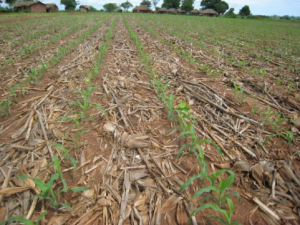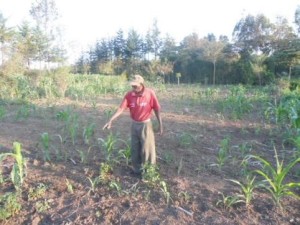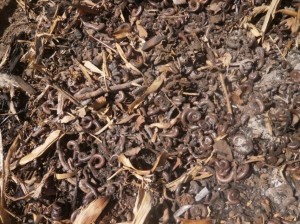Farmers in Laikipia have been decrying over increased number of millipedes which have been wrecking havoc in their farms. The pests have been invading myriads of farms feeding on all types of crops during germination. This problem has existed since the year 2009. Their continued crop damage has forced farmers to shun producing crops such as Irish potatoes, Sweet potatoes and Carrots which are worst affected. Consequently, acreage under crop production have also been reducing in an attempt to avert loses occasioned by millipede menace. Areas that have been worst affected are Muhonia, Endana and Matanya Locations in Laikipia East Sub-County.
Millipedes are brownish, elongated, and cylindrical to slightly flattened creatures with two (more common) or four pairs of tiny legs per body segment. They normally live in and feed on rotting leaves, rotting wood, and other kinds of moist, decaying plant matter. Generally, their role is a beneficial one in helping to break down dead plant matter. However, when they become numerous, they tend to damage sprouting seeds, seedlings, stem tubers and fruits in contact with the ground.
Crop residues act as a favorable habitat for millipedes and tend to feed on it. On a farm covered with mulch materials, Millipedes concentrate on feeding on them and leave the crops to grow. In conservation agriculture, Soil cover through residue retention forms an integral principle.
During the inception of the AGRA funded CA4FS project in Laikipia county, farmers were very skeptical about leaving mulch in their farms fearing that it will aggravate the millipedes menace. However, Contrary to their view, residue left has come in handy as Millipedes have been “opting” feeding on the residues to the crops in the farm. Presence of mulch gives the crop the opportunity to germinate and grow “unharmed” by millipedes at the seedling stage. This has resulted to higher plant population where residue is being retained and ultimate good harvest. Farmers also use mulch to attract millipedes so that they can control them at one point using chemical bait. Once the millipedes gather under the residue, farmers then apply the chemical bait so that they can feed on it and die. The chemical bait is a composite of maize germ mixed with a pesticide.
In farms with no residue retained, millipedes tend to hide under the soil to avoid strong sunlight and embark on eating the crop seedlings during the night since they lack “alternative food” (mulch material)
Most of the farmers who are retaining mulch have started to record low millipede population in their farms and homes. This has helped increase the crop yield and alley the farmers’ fear of millipedes damage on crops.
 |
 |

